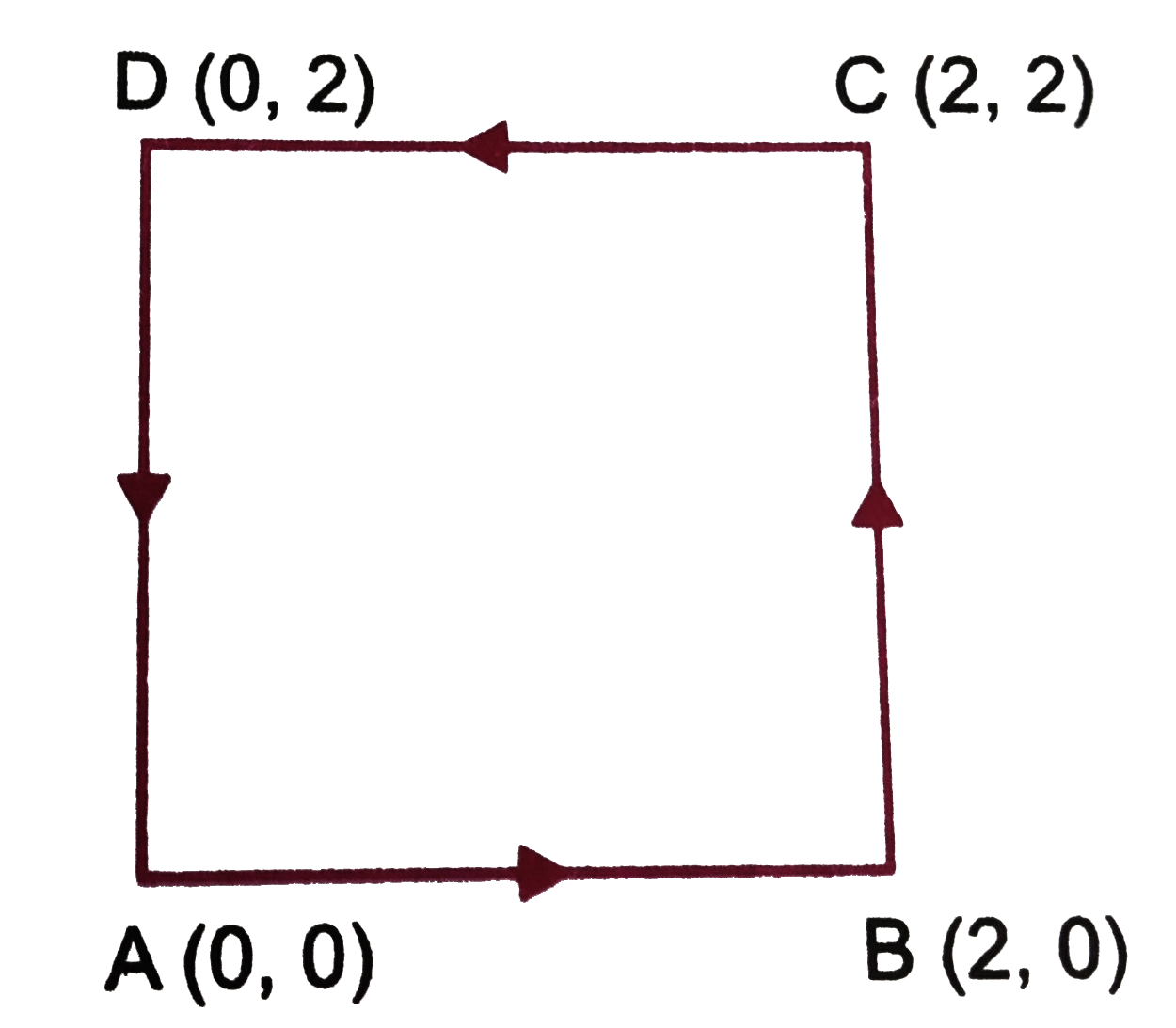A force →F=(−yˆi+xˆj)N acts on a particle as it undergoes counterclockwise circular motion in x-y plane in a circle of radius 4 m and with the centre at origin. If the work done by the force when the particle undergoes one complete revolution is (assume x,y are in m) 4πλ joule then calculation λ.
W=∫F.d→r=→F.[Rdthη(−sinθˆi+cosθˆj)]
R2∫2x0dthη
Topper's Solved these Questions
- TEST PAPERSBOOK - BANSALCHAPTER - TEST PAPERSEXERCISE - PHYSICS PART (A)
32 Videos
- TEST PAPERSBOOK - BANSALCHAPTER - TEST PAPERSEXERCISE - PHYSICS PART (B)
3 Videos
- TEST PAPERSBOOK - BANSALCHAPTER - TEST PAPERSEXERCISE - PHYSICS PART- C
4 Videos
- SEMICONDUCTORSBOOK - BANSALCHAPTER - SEMICONDUCTORSEXERCISE - CBSE Question
32 Videos
Similar Questions
A force →F=(−yˆi+xˆj)N acts on a particle as it moves in an anticlockwise circular motion in x-y plane. The centre of the circle is at the origin. If the work done by the force is 32πJ in one complete revolution then asSigmaing x,y to be in meters, find the radius of the path.
View SolutionForce acting on a particle varies with displacement as shown is Fig. Find the work done by this force on the particle from x=−4m to x = + 4m.
 .
.
View Solution
Knowledge Check
A force →F=b−yˆi+xˆjx2+y2N( b is a constant ) acts on a particle as it undergoes counterclockwise circular motion in a circle :x2+y2=16. The work done by the force when the particle undergoes one complete revolution is ( x,y are in m )
A0 JouleB2πb JouleC2b JouleD4πb JouleA force →F==b−yˆi+xˆjx2+y2N (b is a constant) acts on a particle as it undergoes counterclock-wise circular motion in a circle : x2+y2=16. The work done (in J) by the force when the particle undergoes one complete revolution is (x, y are in m)
AZeroB2πbC2bDNone of theseThe force F acting on a particle is moving in a straight line as shown in figure. What is the work done by the force on the particle in the 4 m of the trajectory?
 A5 JB10 JC15 JD2.5 J
A5 JB10 JC15 JD2.5 J
A force →F=(4ˆi+5ˆj)N acts on a particle moving in XY plane. Starting from origin, the particle first goes along x-axis to the point (5.0) m and then parallel to the Y-axis to the point (5,4 m. The total work done by the force on the particle is

View SolutionA force F is related to the position of a particle by the relation F=(10x2)N . Find the work done by the force when the particle moves from x=2m→x=4m.
View SolutionA force →F=2xˆj newton acts in a region where a particle moves annticlockwise in a square loop of 2m in x−y plane as shown in figure . Calculate the total amount of work done. Is this force a conservative force or a non-conservative force?

View SolutionA force →F=xˆi+y2ˆjN acts on a particle and the particle moves from (1,2)m to (–3,4)m. Find work done by the force →F.
View SolutionA particle of mass 20 kg executing uniform circular motion on a path of radius 4.5 m , if the 30kgm/s is the magnitude of licear momentum . Then the radian force acting on the particle is
View Solution
